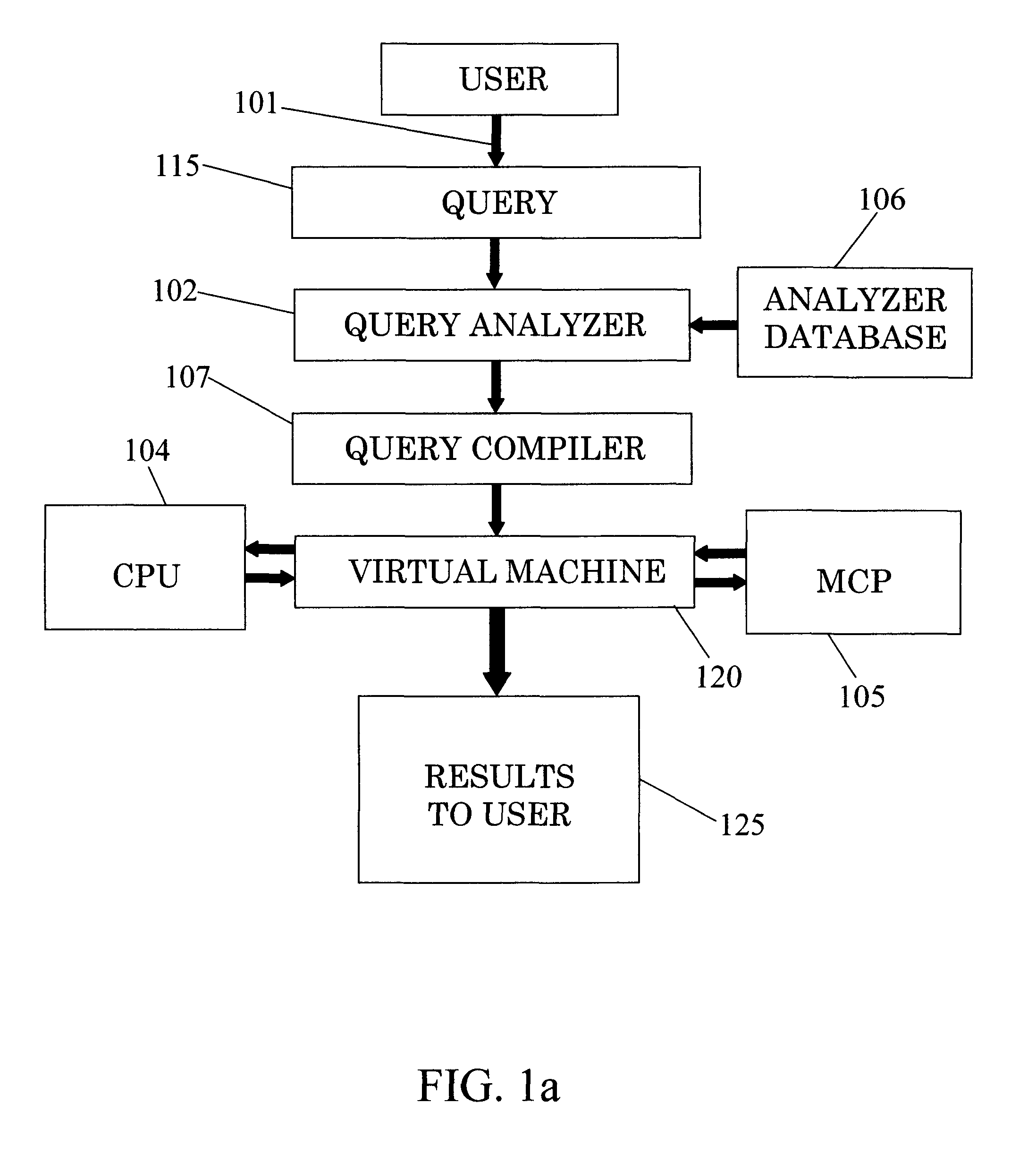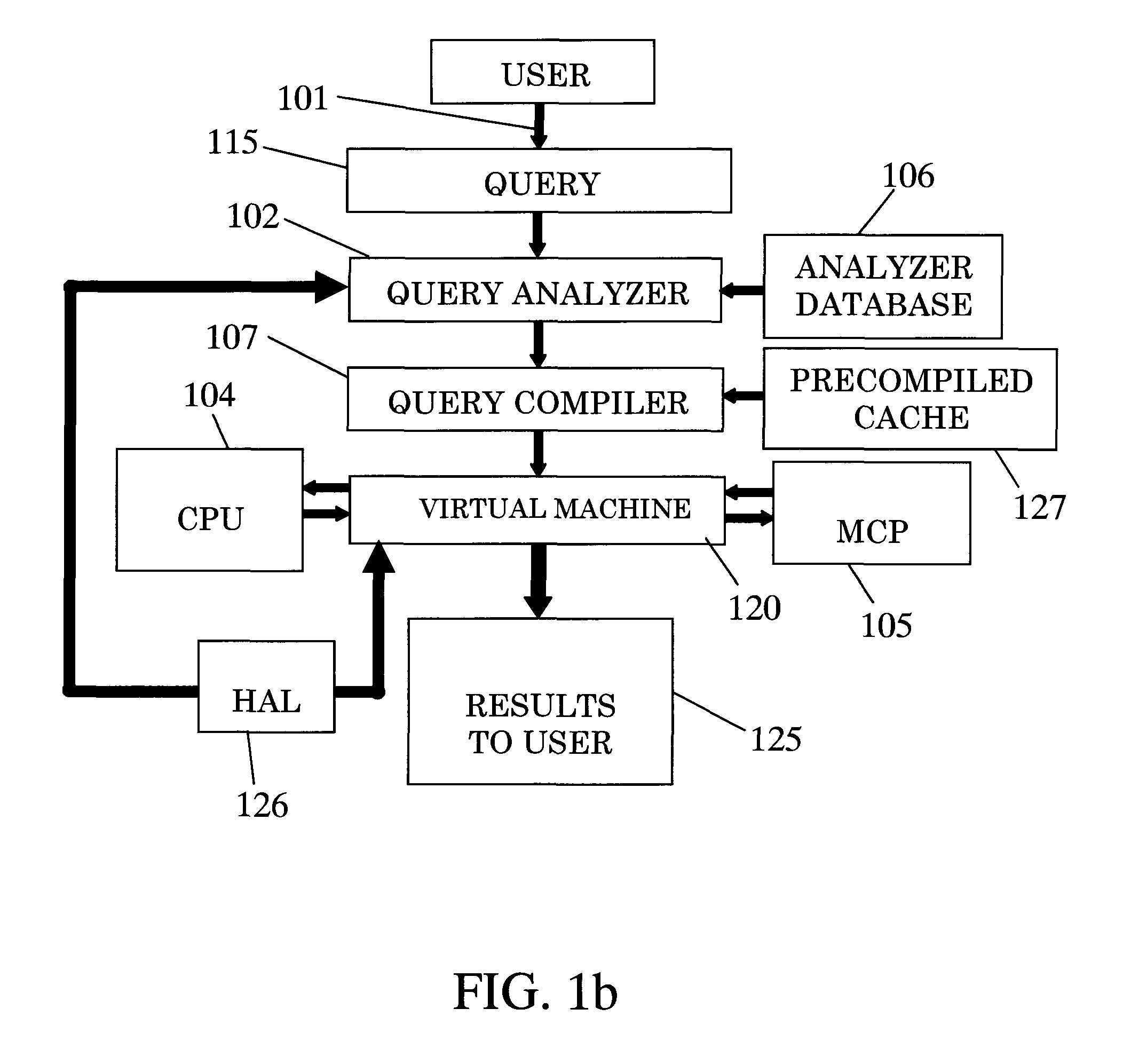System and method for the parallel execution of database queries over CPUs and multi core processors
a database and multi-core processor technology, applied in the field of data bases and data sets queries, can solve the problems of large storage space, excessive power consumption, limitation over the number, etc., and achieve the effect of less energy, less power consumption, and higher clock rates
- Summary
- Abstract
- Description
- Claims
- Application Information
AI Technical Summary
Benefits of technology
Problems solved by technology
Method used
Image
Examples
example 1
“SELECT*FROM T1 ORDER BY T1.a”
[0047]Assuming T1.a has a string (char[N], varchar, etc.) type it may be preferred to use a bitonic sort on this string. Assuming T1.a has a float type, it may be preferred to use lexicographical sort. The decision is made based on run-time observations of performance (it depends on data which is operated and MCP on the type (single GPU, multiple GPUs, Knights Ferry / Corner, etc.).
[0048]The virtual machine (VM) 120 receives the execution tree from query compiler 107. As noted above, the execution tree is constructed from both SQL sub queries intended for solely execution by the CPU 104 on the DBMS, and executable code created by query compiler 107 through AST for solely execution on the MCP 106. The VM 120 inserts this execution tree to a task bank (shown in FIG. 2). The task bank enables both in-order and out-of-order execution of primitives and DBMS sub-queries. The task bank now contains sub-queries for DBMS execution by the CPU 104, and those primiti...
example 2
[0052]“select*from employees where salary <3000 order by salary”, assuming salary is not the key and the analyzer database contains a histogram of, for example, 1000 bars, each bar is the amount of rows in a table with salary between the bar's boundaries. The result-set size can be estimated at a very high speed given the fact that running of 1000 threads simultaneously for each histogram is not at all a problem for an MCP. Each column in the table has the statistics stored in the abovementioned bars, and in the case there is an AND operator between two columns, the system simply chooses a minimal number of rows from the two columns. In case the there is an OR between the two columns, the system sums up the results to obtain the estimated size. This size is used by the VM to allocate buffers in the memory of the MCP or within a RAM.
example 3
[0053]a processing operation which is not supported by the MCP, is targeted to the CPU, a ‘JOIN’ operation over large databases which is expected to yield a large result (i.e., a result having a large number of elements), is targeted to the MCP, a ‘select for update’ operation which normally does not require much processing, is typically targeted to the CPU. If the query is simple, or contains DDL statements (e.g., insert, update, delete) it is sent directly to DBMS and executed in a regular manner (as all queries are executed without employing the present invention).
[0054]Analyzer database 106 stores in general database indexes, columnar statistics, distributions and optionally other data.
[0055]As mentioned, the query compiler 107 receives a query, and in turn forms an AST from it. The AST contains all the primitives that should run on data which is provided by the DBMS to complete the query. After preparation of the AST, (each node of the AST contains MCP one or more primitives) t...
PUM
 Login to View More
Login to View More Abstract
Description
Claims
Application Information
 Login to View More
Login to View More - R&D
- Intellectual Property
- Life Sciences
- Materials
- Tech Scout
- Unparalleled Data Quality
- Higher Quality Content
- 60% Fewer Hallucinations
Browse by: Latest US Patents, China's latest patents, Technical Efficacy Thesaurus, Application Domain, Technology Topic, Popular Technical Reports.
© 2025 PatSnap. All rights reserved.Legal|Privacy policy|Modern Slavery Act Transparency Statement|Sitemap|About US| Contact US: help@patsnap.com



